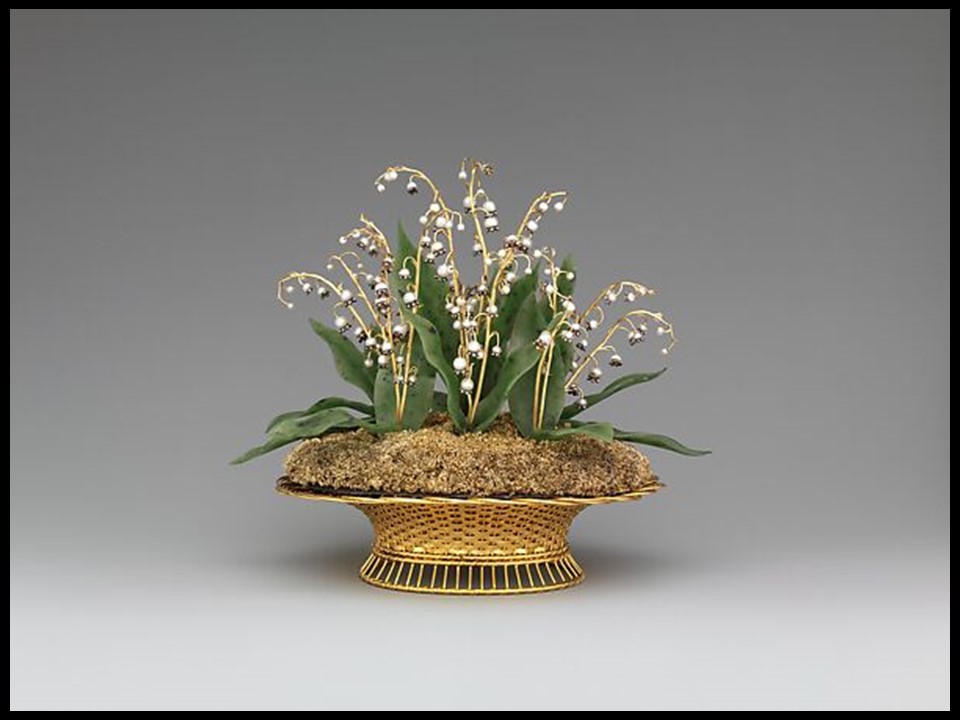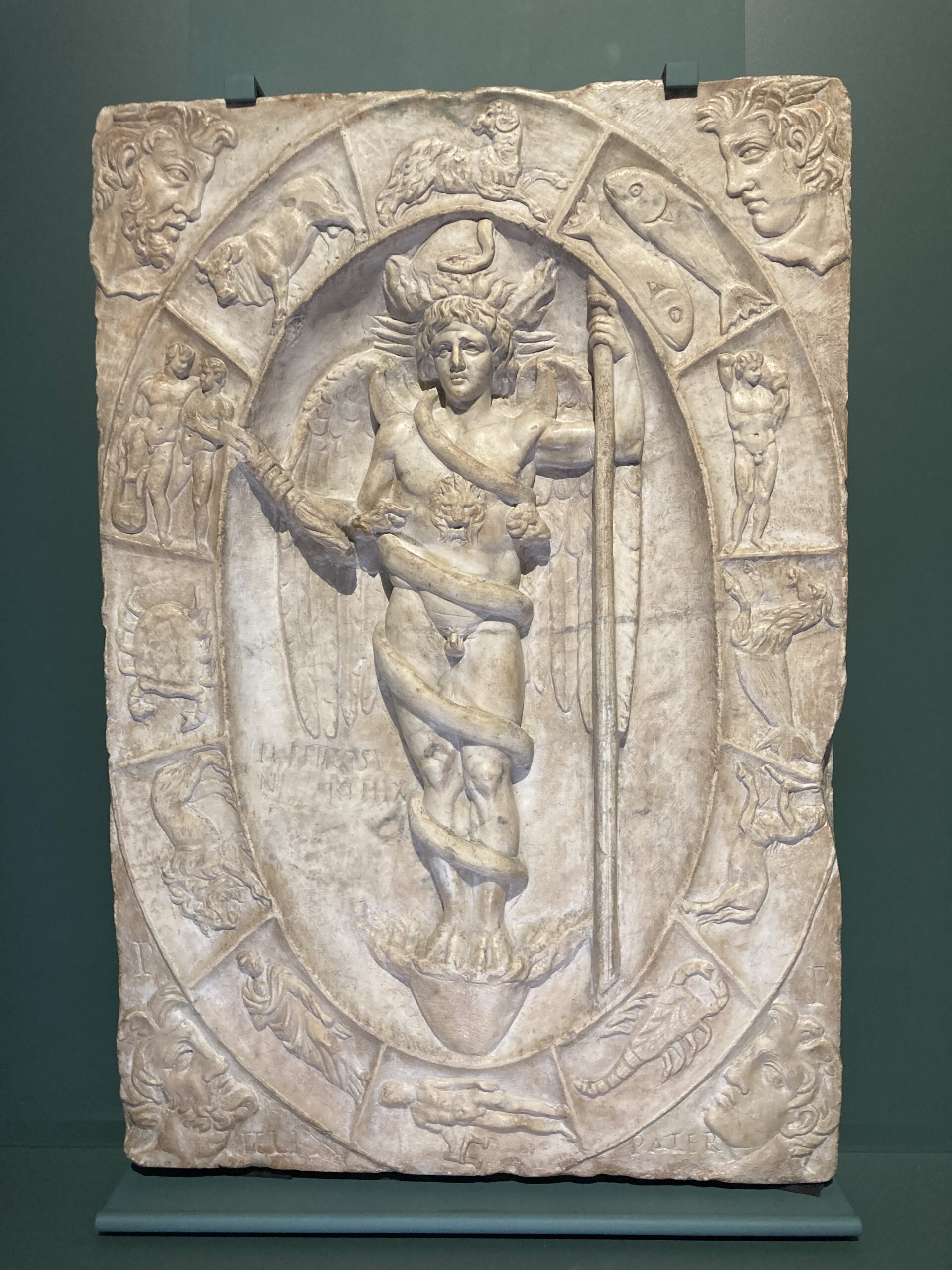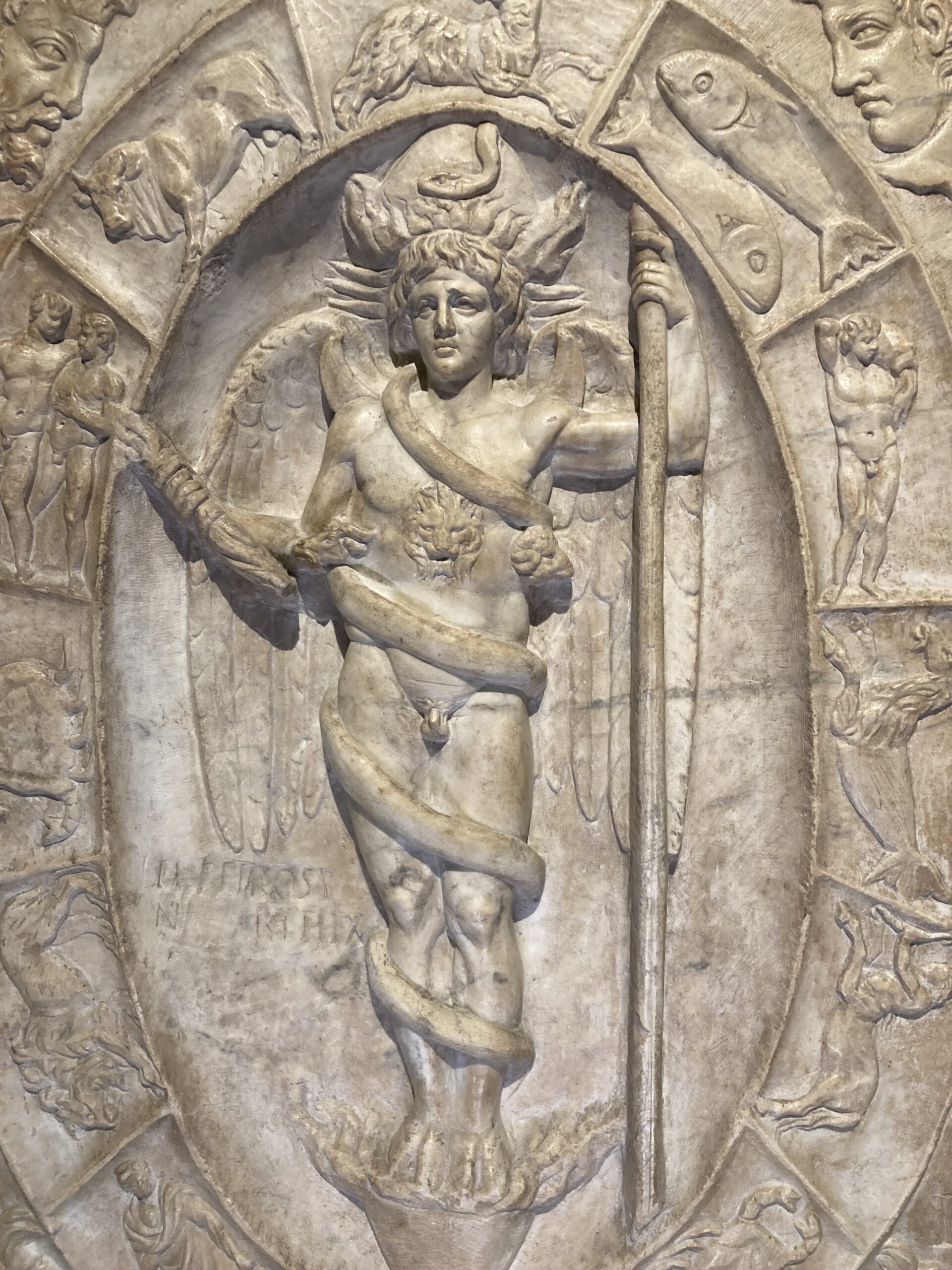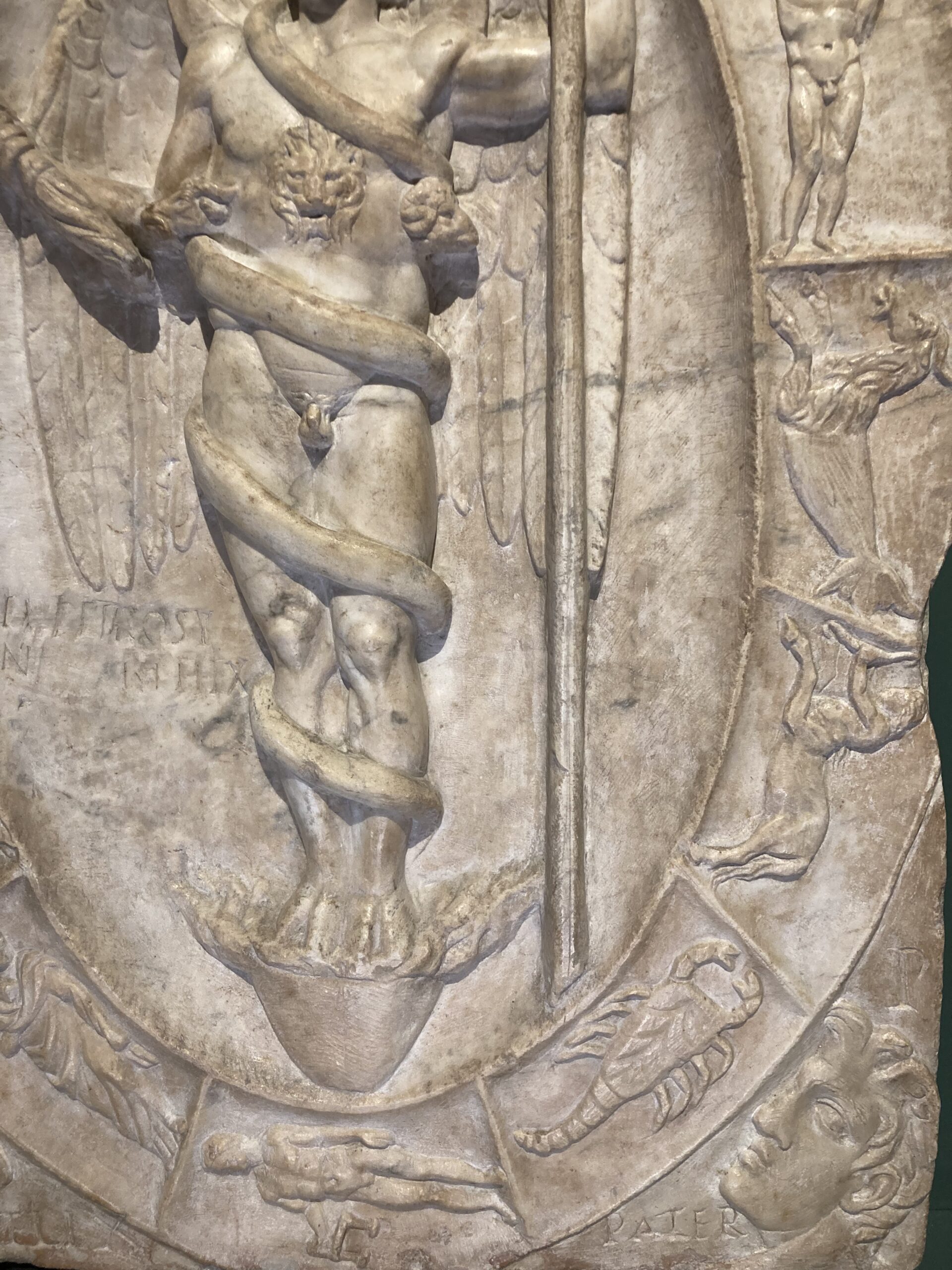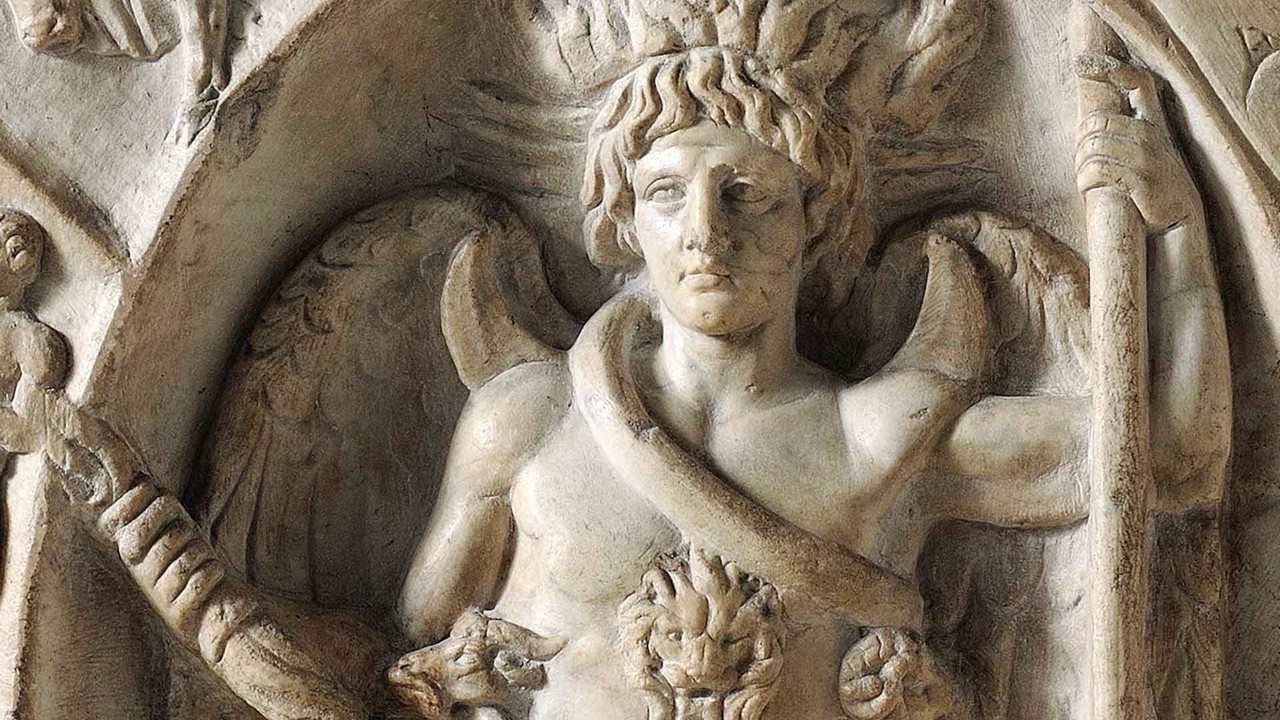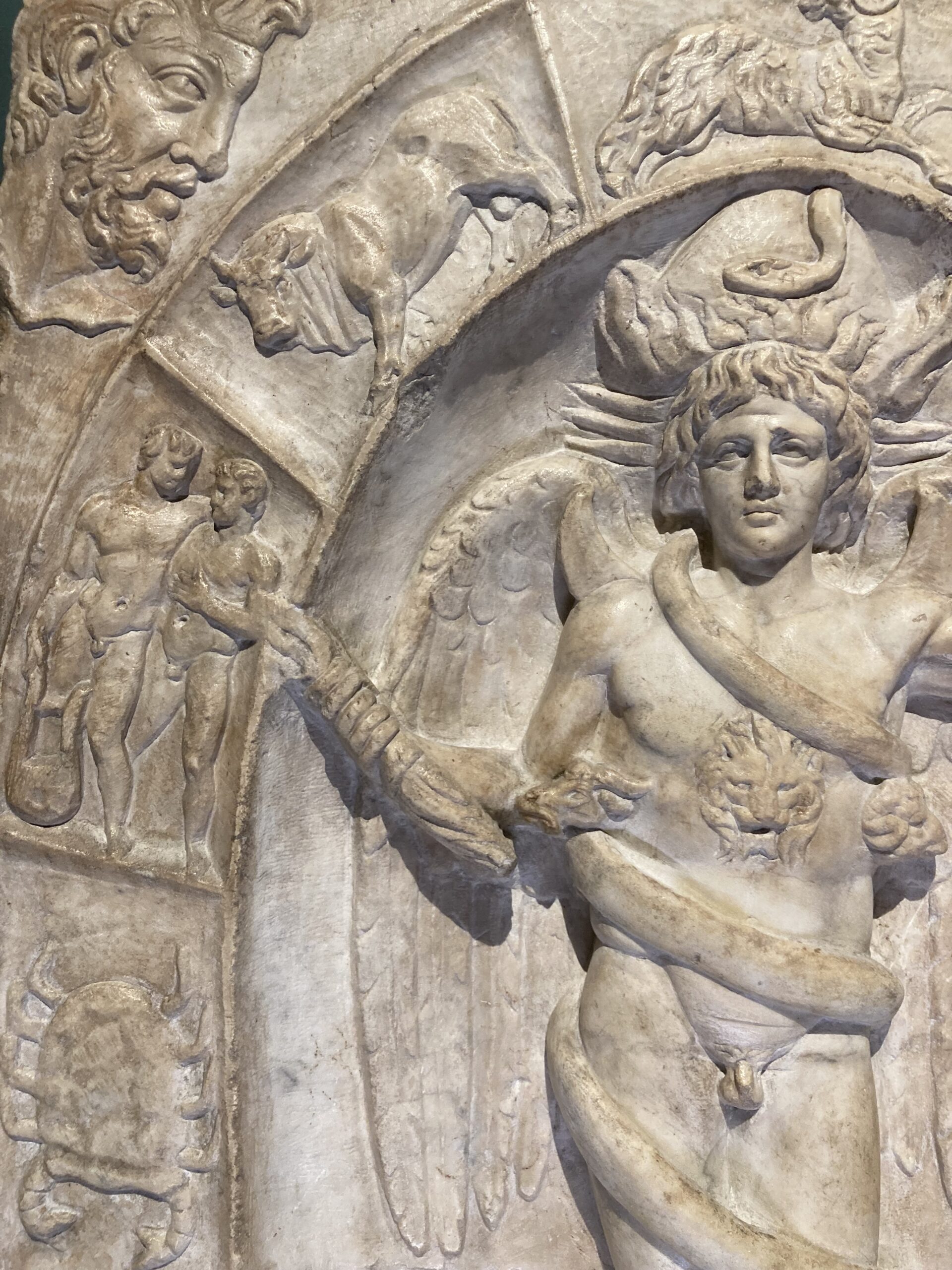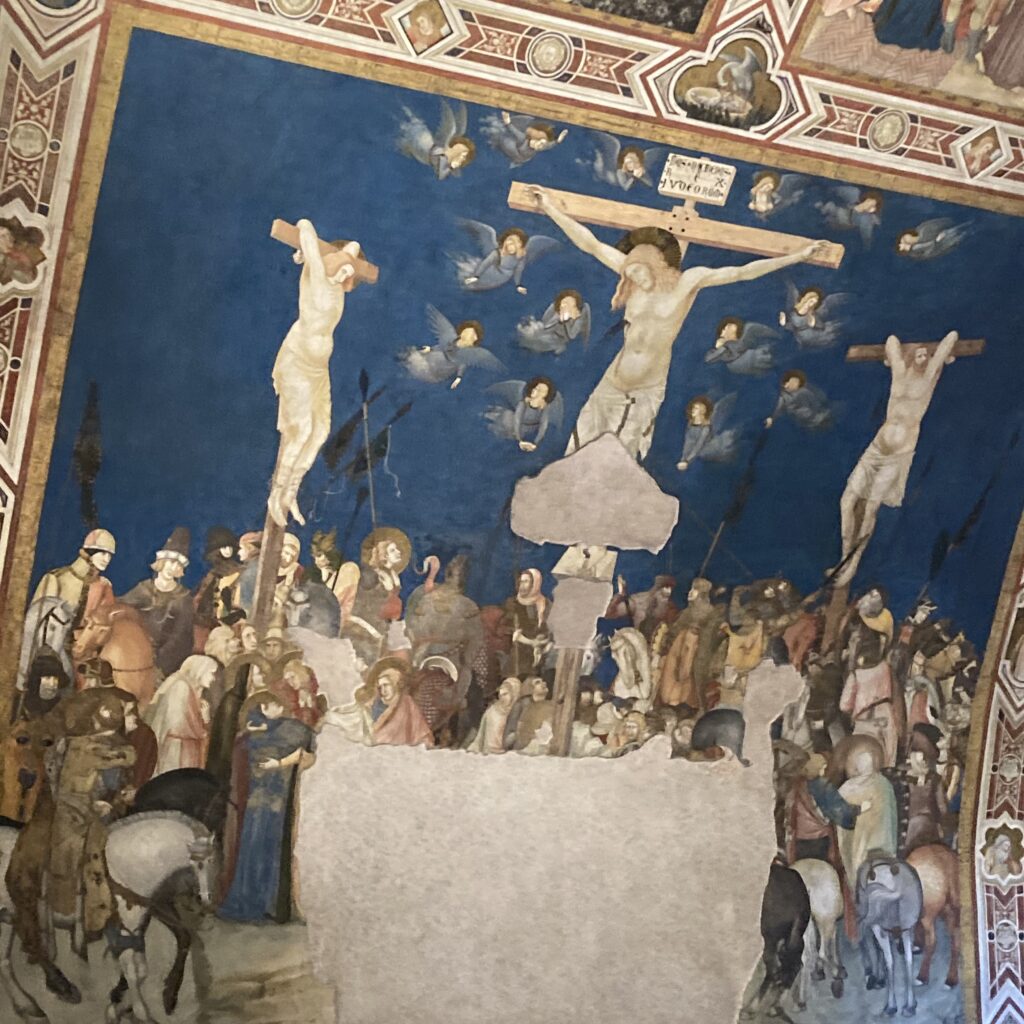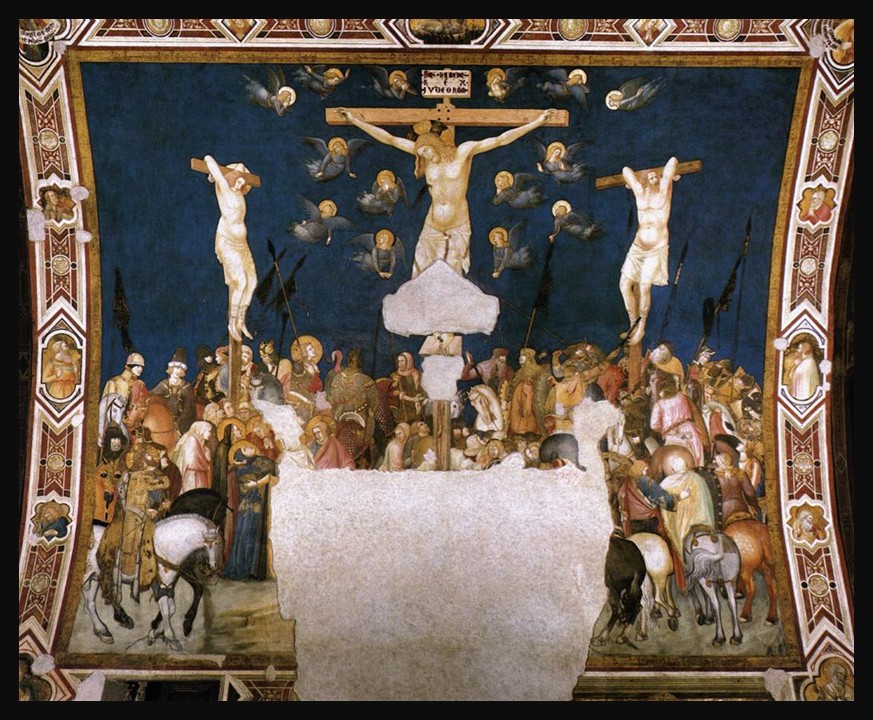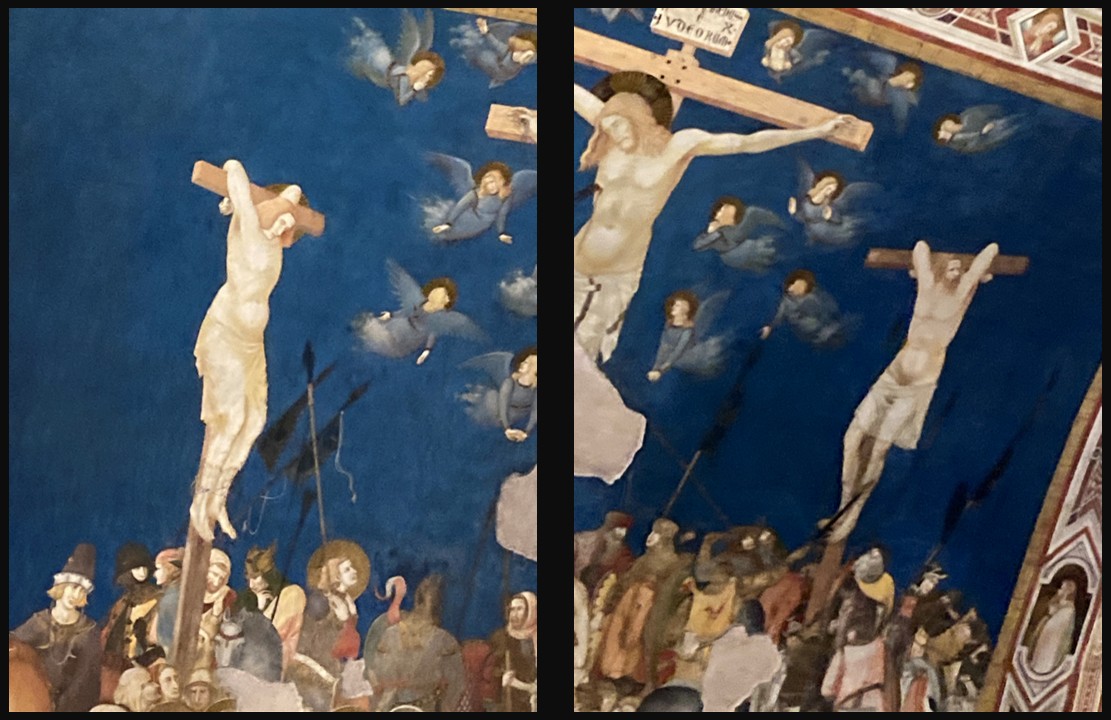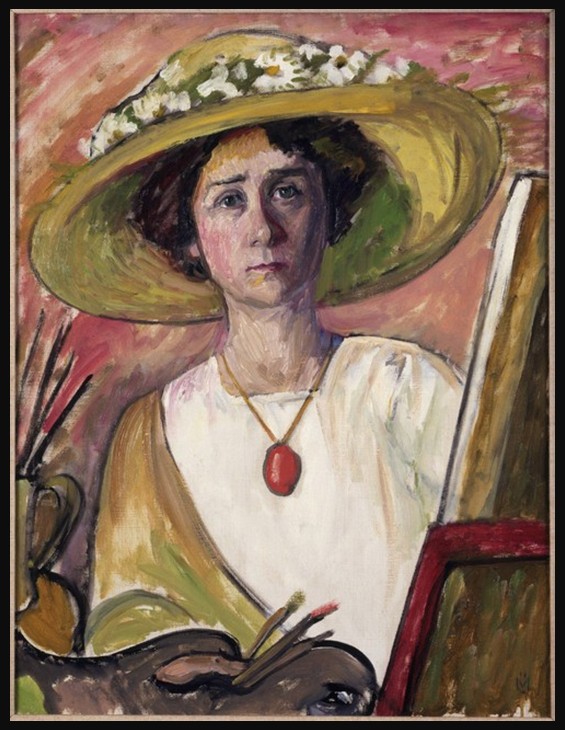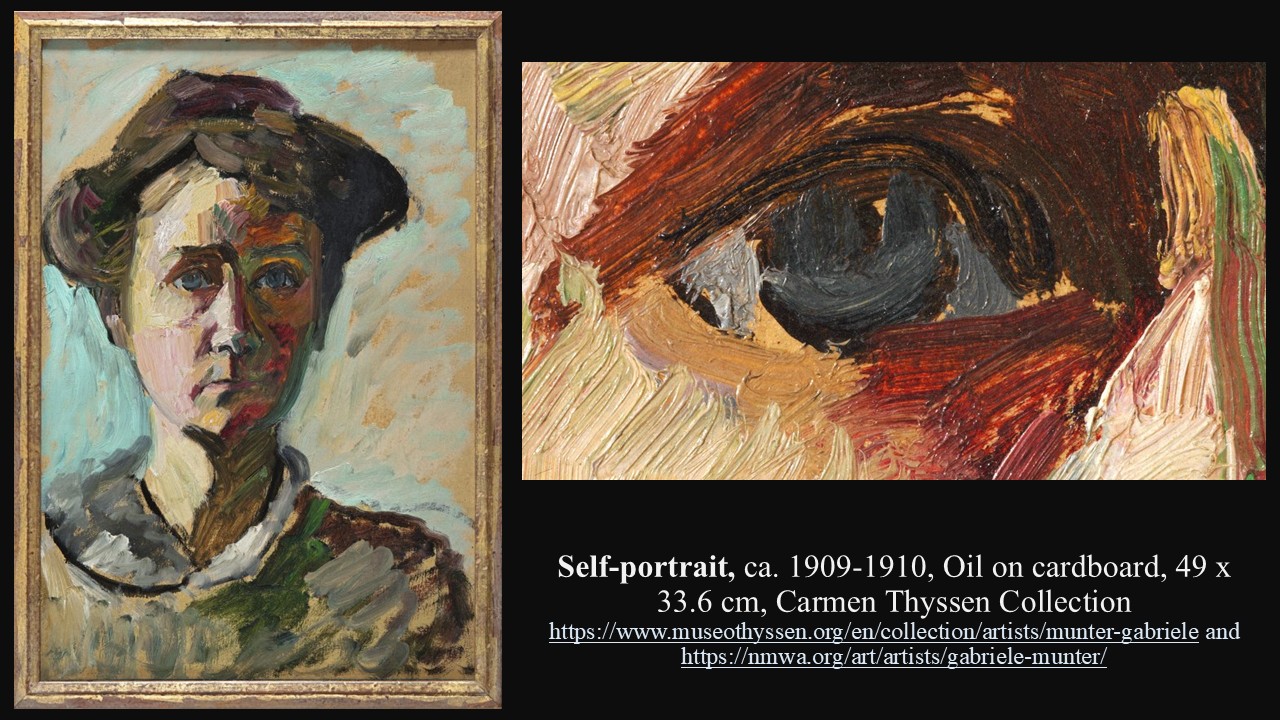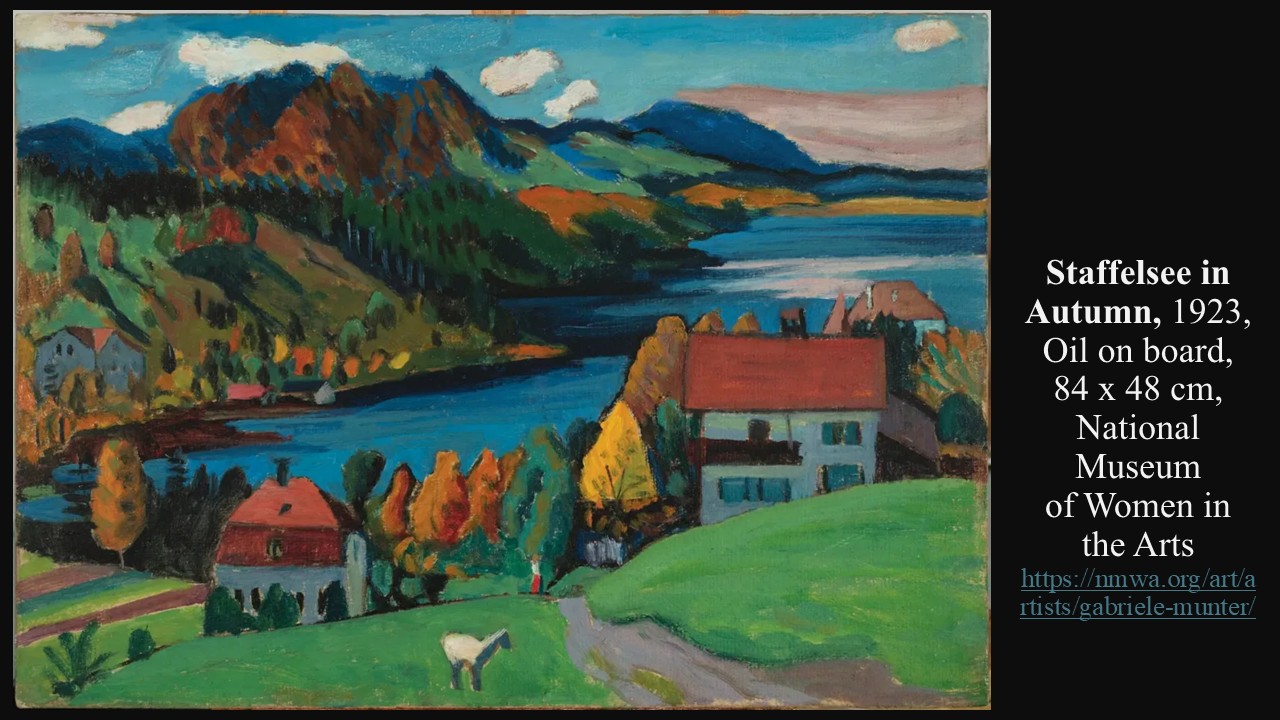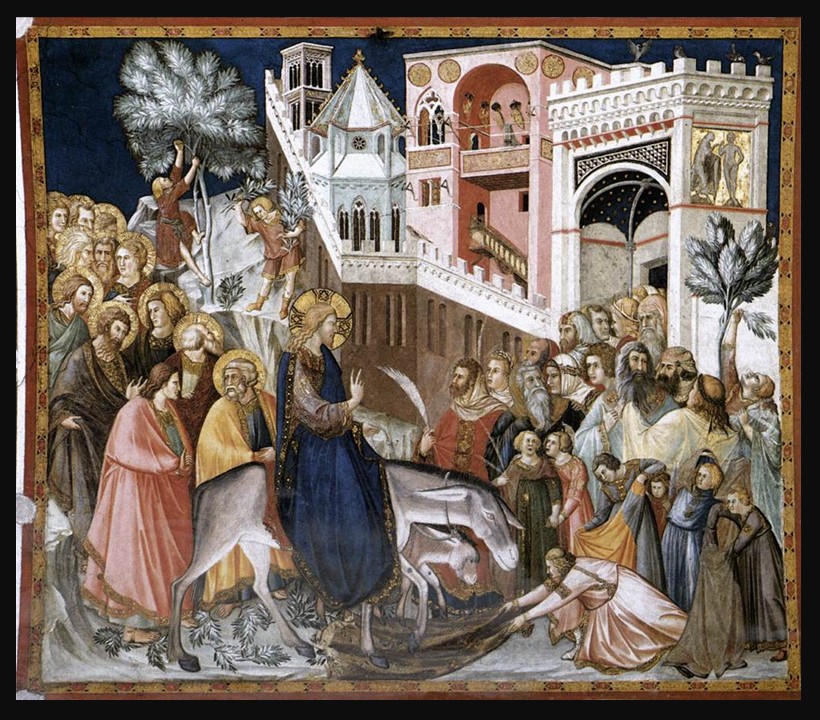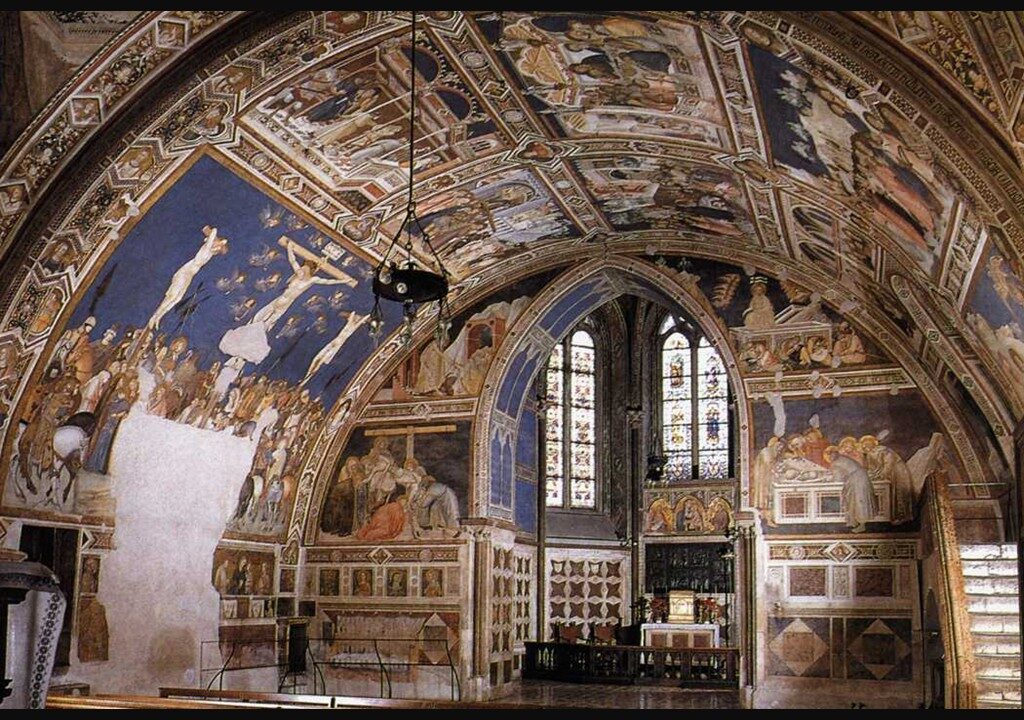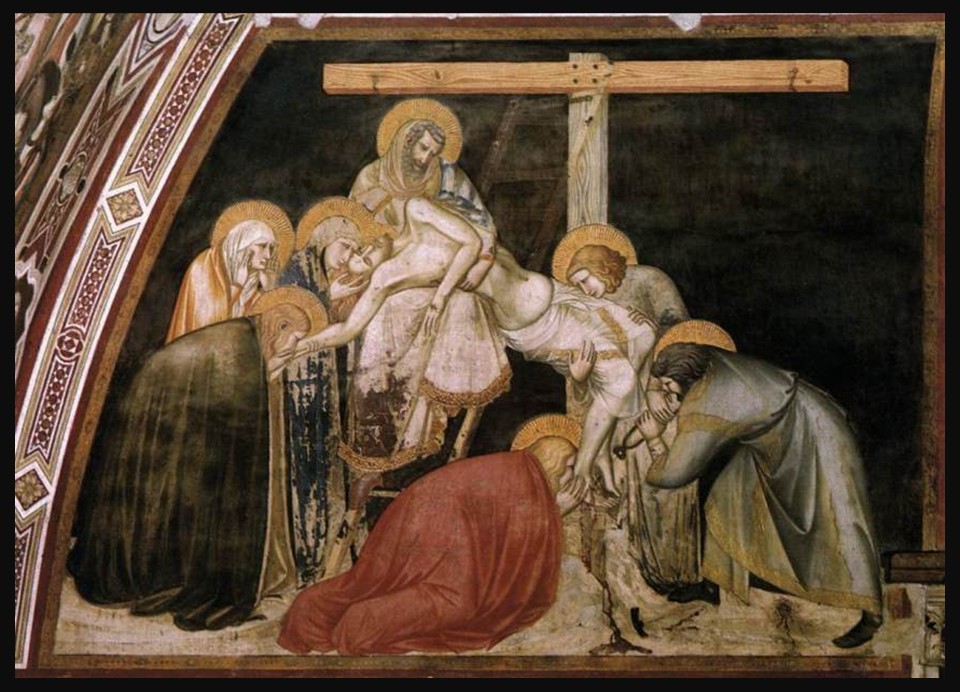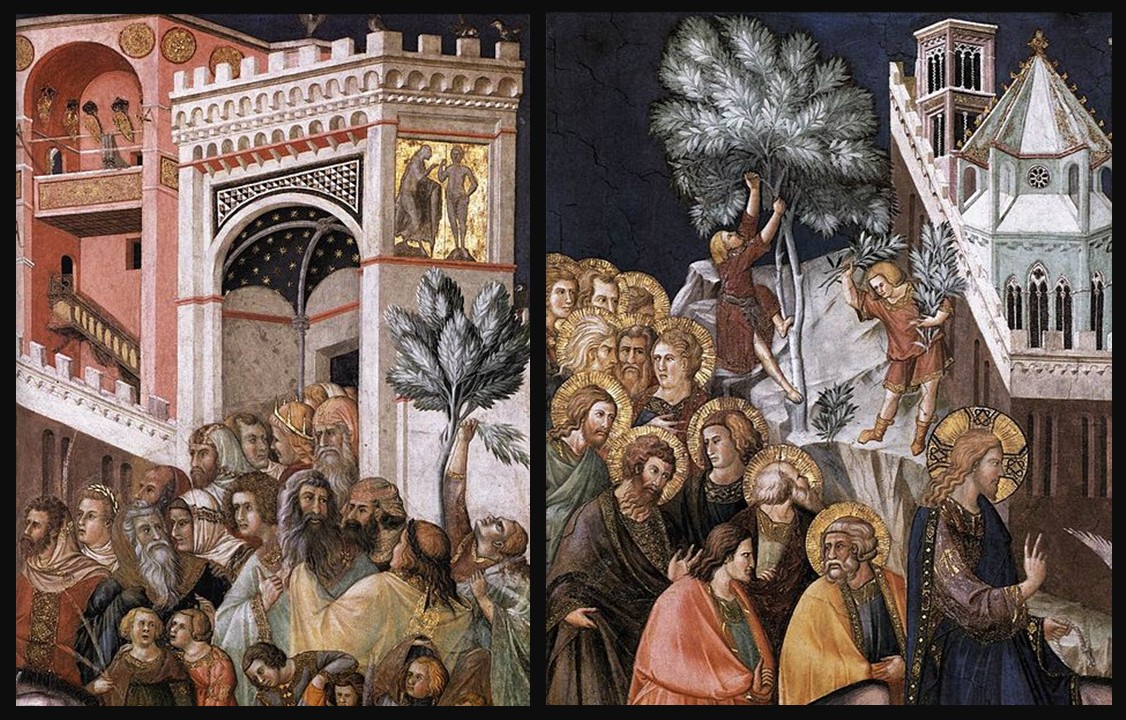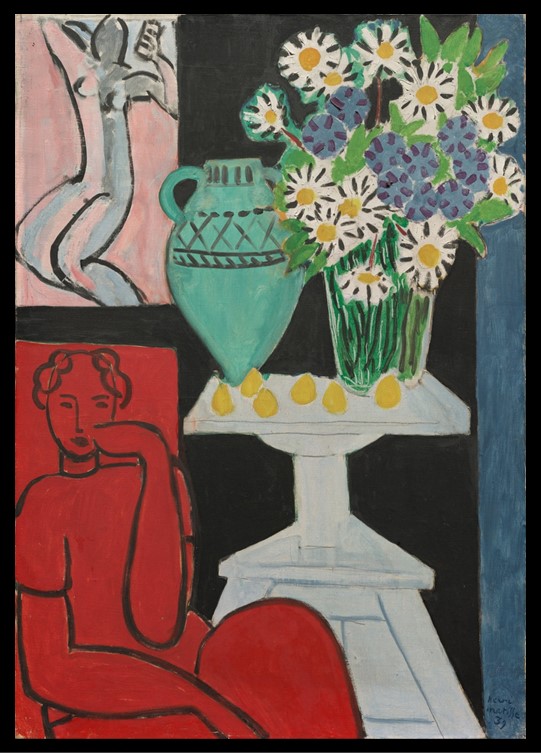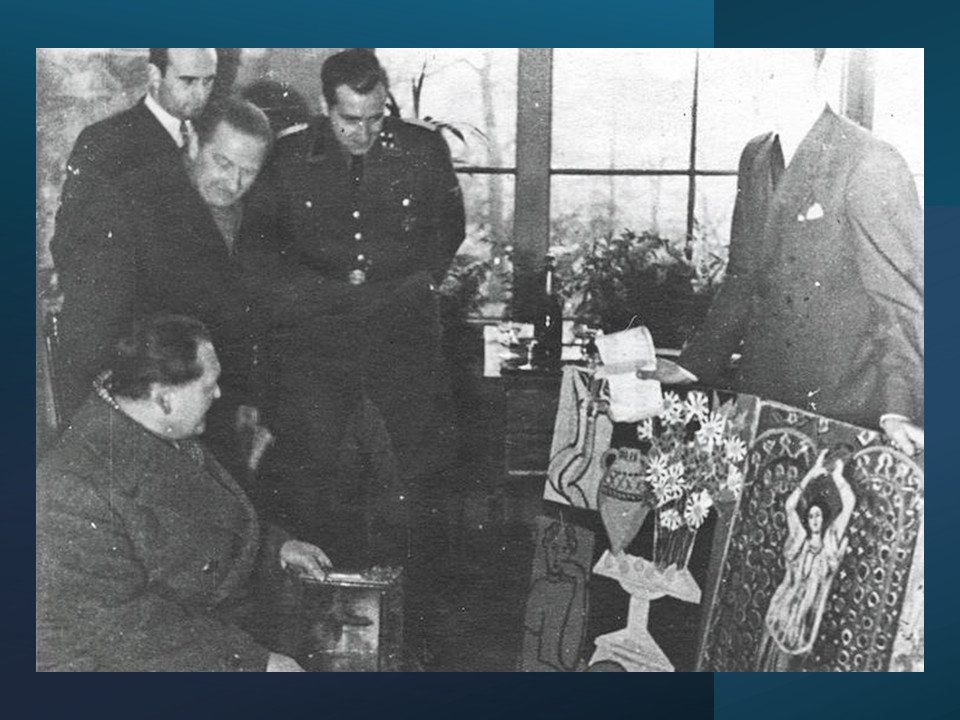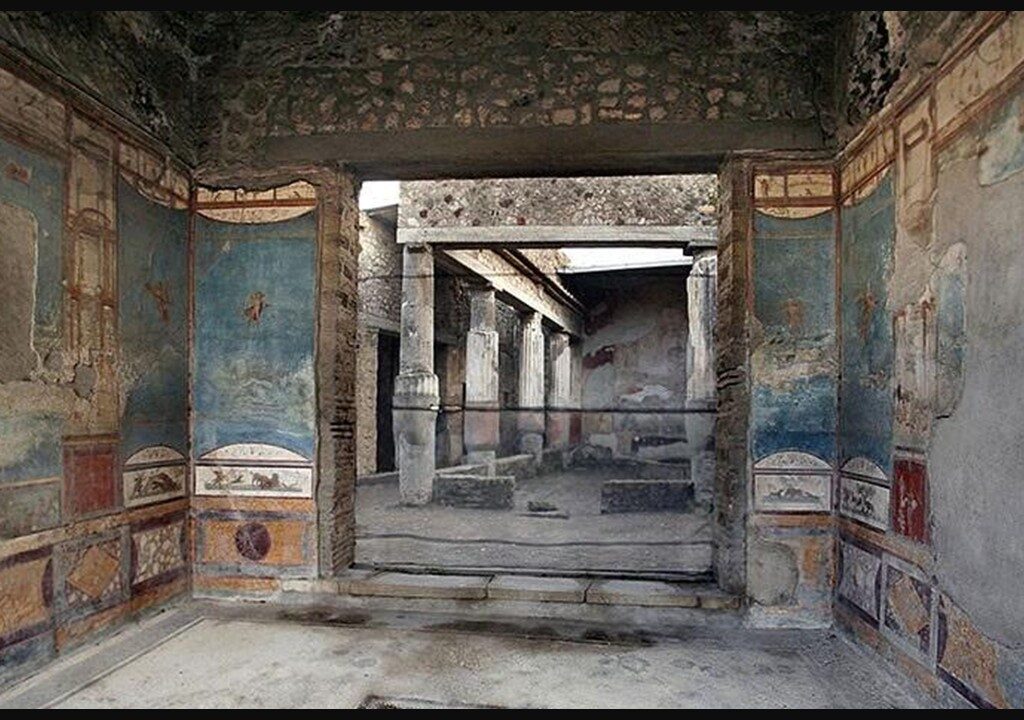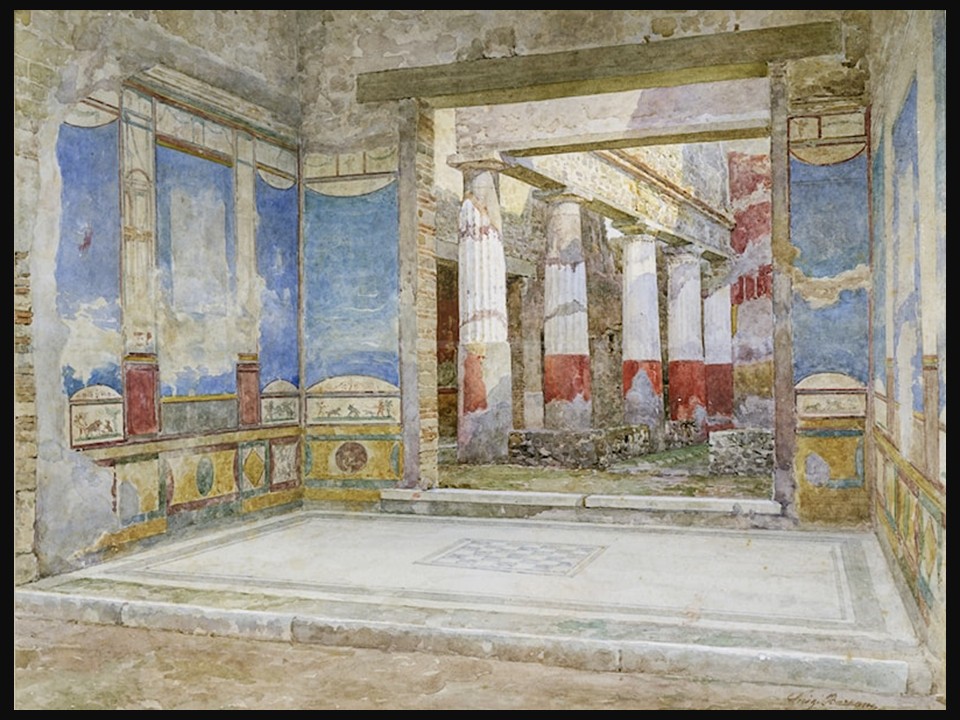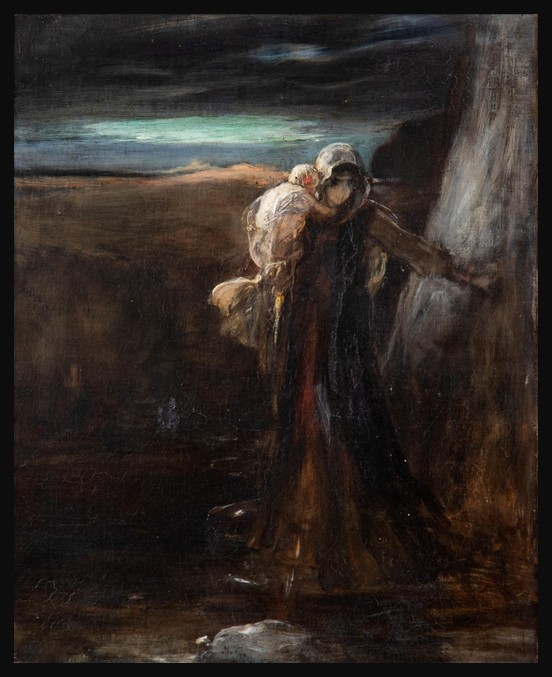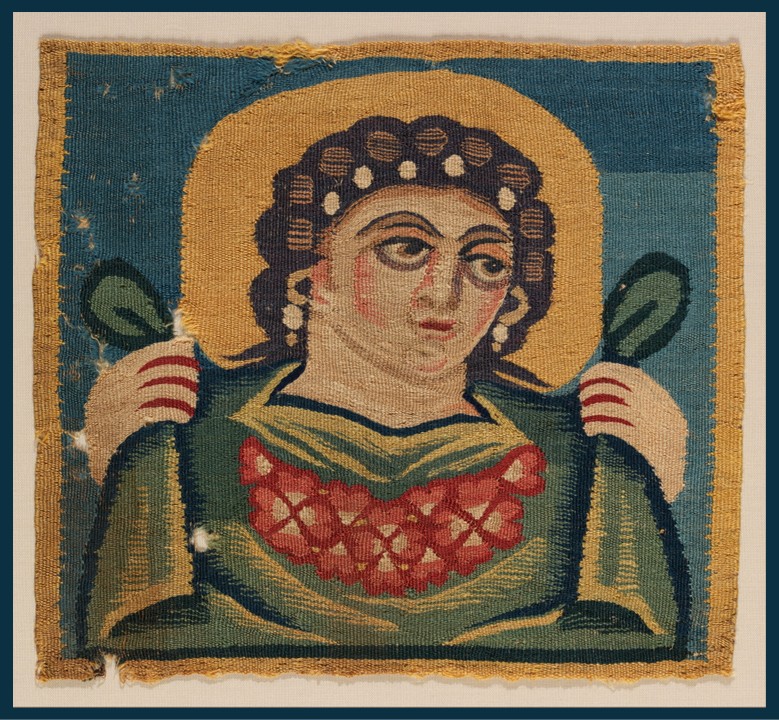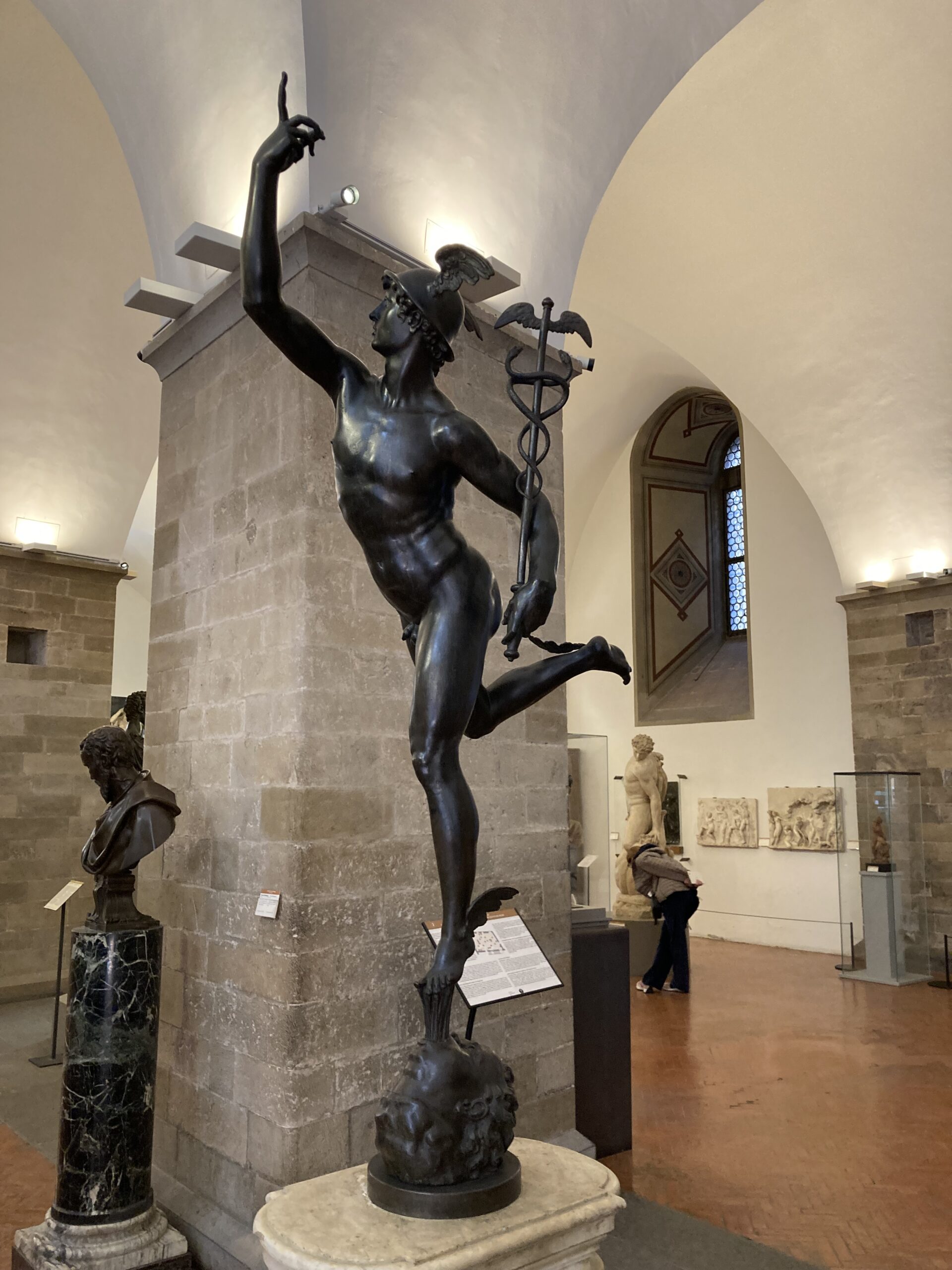
Mercury, 1564-65, Bronze, Height: 1.87 m, National Museum of Bargello, Florence, Italy – Photo Credit: Amalia Spiliakou, April 2025
High in the dome of Heaven, behold the bright Caduceus-Bearer soared on balanced wings… With these words from Metamorphoses, Ovid captures the essence of Mercury—the swift-footed messenger of the gods, gliding effortlessly between the realms of men and Olympus. Few sculptures have embodied this celestial lightness more vividly than Giambologna’s Mercury, housed in Florence’s Bargello Museum. A masterpiece of Mannerist sculpture, this bronze figure defies gravity, poised mid-flight with one foot balanced on a puff of air, as if the god himself has just touched down—or is about to vanish upward. Both a technical marvel and a poetic tribute to divine motion, Giambologna’s Mercury invites us to consider how myth and material can together create the illusion of weightless divinity. https://www.perseus.tufts.edu/hopper/text?doc=Perseus%3Atext%3A1999.02.0028%3Abook%3D2%3Acard%3D708 Ovid’s Book II, lines 708-832
Giambologna, born Jean Boulogne in 1529 in Douai, Flanders (now northern France), was one of the most celebrated sculptors of the late Renaissance. Trained in the Flemish tradition, he moved to Italy in his twenties, where the grandeur of classical antiquity and the influence of Michelangelo deeply shaped his artistic vision. After a period of study in Rome, he settled in Florence and entered the service of the powerful Medici family, becoming their official sculptor. Giambologna spent most of his career in Florence, where he produced a prolific body of work for public spaces, churches, and the Medici court. His art, which bridged the High Renaissance and early Baroque, earned him fame across Europe, and his reputation led to commissions from prominent patrons beyond Italy, including the kings of France and Spain.
Giambologna’s sculptures are renowned for their dynamic movement, elegant elongation, and mastery of anatomy, often conveying a sense of fluid motion frozen in bronze or marble. He favored spiraling compositions and complex, multi-viewpoint figures—hallmarks of the Mannerist style that pushed beyond the balanced harmony of the High Renaissance. Works like The Rape of the Sabine Women and Mercury exemplify his ability to animate mythological subjects with theatricality and grace. Mercury, in particular, showcases his signature elegance: the god is captured in a moment of upward flight, supported by a breath of wind and pointing heavenward with refined poise. Giambologna’s attention to surface detail, psychological expression, and compositional ingenuity placed him among the most innovative sculptors of his time and helped define the artistic identity of late 16th-century Florence.
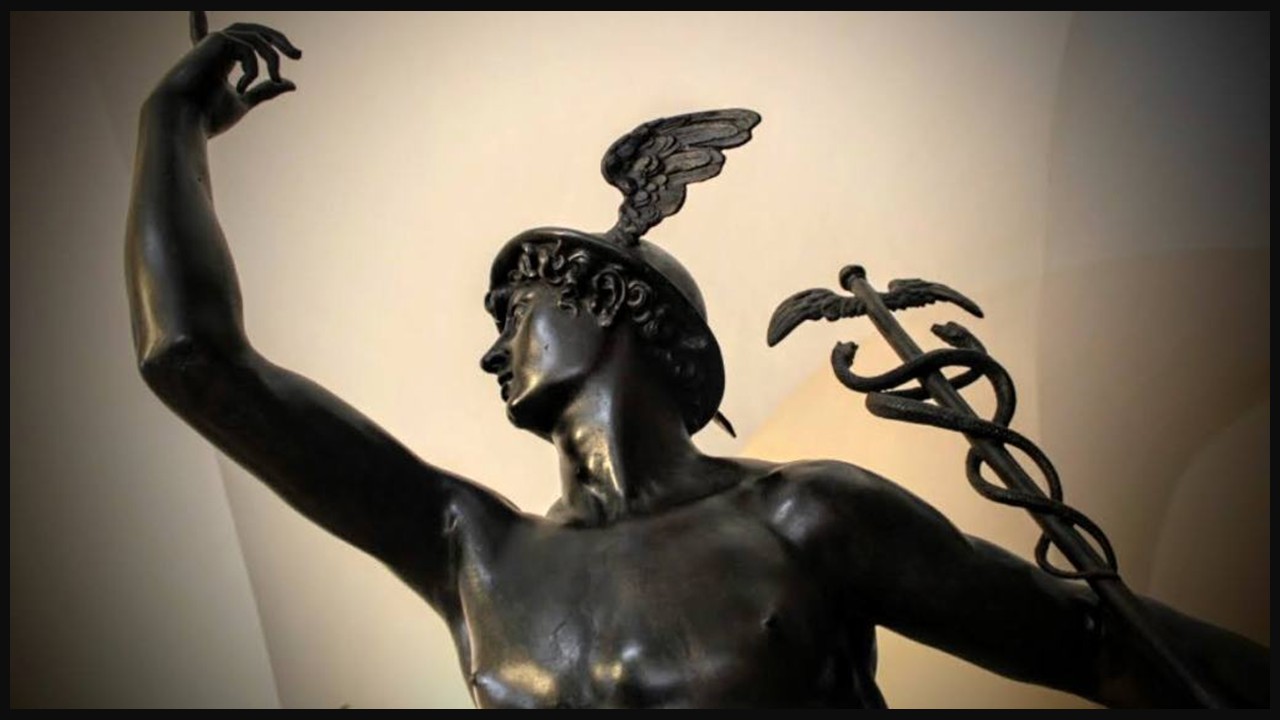
Mercury (detail), 1564-65, Bronze, Height: 1.87 m, National Museum of Bargello, Florence, Italy https://michelangelobuonarrotietornato.com/2023/07/17/la-scultura-del-giorno-il-mercurio-volante-del-giambologna/
About a month ago, I found myself standing in one of Florence’s most quietly astonishing museums—the Bargello—and there, in a sunlit corner of its vaulted Renaissance halls, I met Mercury. Not the planet or the element, but Giambologna’s bronze god in flight. He’s impossibly light, captured in the instant of takeoff, one toe barely touching a breath of wind. His arm stretches skyward, guiding your eyes along the elegant arc of his body, as if he might vanish through the ceiling at any moment. With his winged sandals and caduceus in hand, he’s unmistakably the divine messenger—but in this version, he’s also youth, grace, and motion incarnate.
What struck me most wasn’t just the technical feat—though balancing a tall bronze figure on a single outstretched toe is no small thing—it was the way the statue invites you to move. Walk around him and the pose unfolds like choreography: the twist of his torso, the reach of his arm, the lift in his stride. Giambologna, a master of Mannerist sculpture, was clearly less interested in stillness than in storytelling. Here, Mercury isn’t simply frozen in time; he’s becoming. There’s a rhythm to his limbs, a musicality even in the tension of his muscles. You don’t just look at this sculpture—you orbit it.
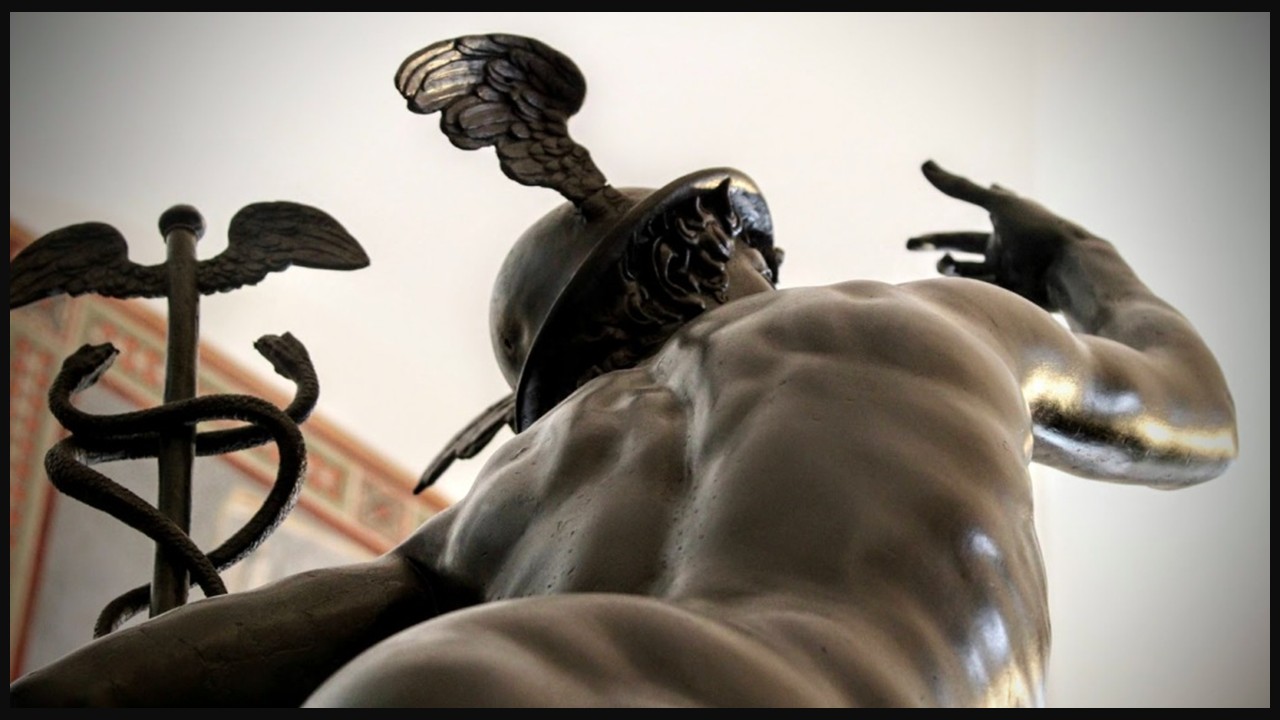
Mercury (detail), 1564-65, Bronze, Height: 1.87 m, National Museum of Bargello, Florence, Italy https://michelangelobuonarrotietornato.com/2023/07/17/la-scultura-del-giorno-il-mercurio-volante-del-giambologna/
Like so much in Florence, this statue comes with a backstory as rich as the bronze it’s cast in. Vasari, ever the gossipy biographer of Renaissance artists, tells us that Giambologna originally made a version of Mercury as a gift for Emperor Maximilian II. The emperor, a Medici ally through marriage, fancied himself a kind of modern Mercury—nimble, clever, divinely connected—so Cosimo I had no trouble choosing a fitting diplomatic token. The version at the Bargello may not be that statue; scholars have debated whether it’s an earlier, imperfect casting or a later variant, possibly made around 1580. Records show it turning up in Rome that same year, decorating the gardens of a Medici villa. Somehow, over the centuries, it made its way back to Florence—where I, and countless others, have been lucky enough to encounter it in mid-flight.
In a city overflowing with artistic treasures, it’s easy to feel overwhelmed—but my visit to the Bargello will always stand out, thanks to Mercury. There was something unforgettable about encountering a figure so full of motion and lightness in such a quiet, grounded space. Giambologna’s Mercury doesn’t just capture a mythological god; it captures the wonder of seeing art defy gravity, time, and expectation. Long after leaving the museum’s cool stone halls, it was Mercury who lingered in my thoughts—mid-air, timeless, and still soaring.
For a PowerPoint Presentation of Giambologna’s oeuvre, inspired by Giambologna’s Mercury, please… Check HERE!
Bibliography: https://catalogo.beniculturali.it/CulturalInstituteOrSite/fd60027675ee78994f1fa2f8e4c16f45
A former Teacher Curator BLOG POST on Giambologna is titled The Colosso del’Appenino by Giambologna. It can be reached… https://www.teachercurator.com/art/the-colosso-delappennino-by-giambologna/
